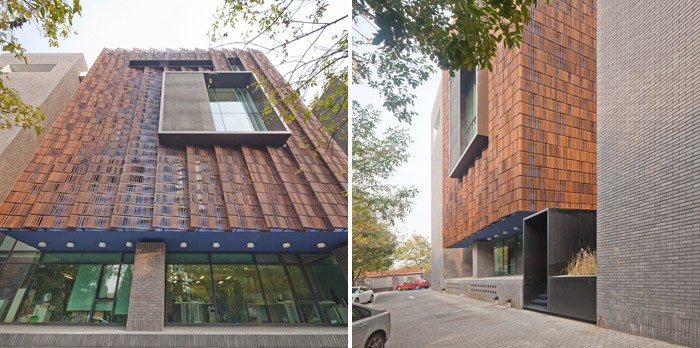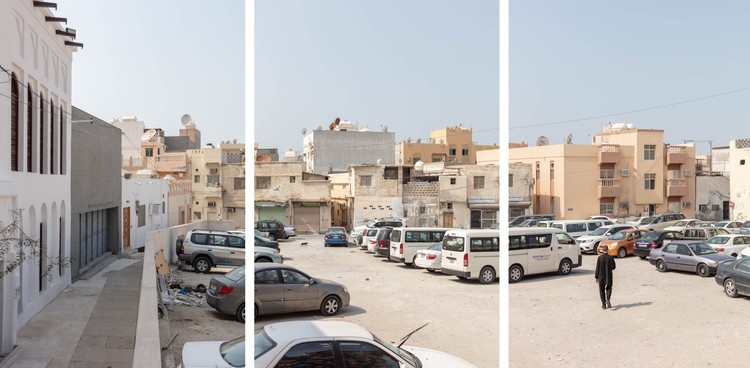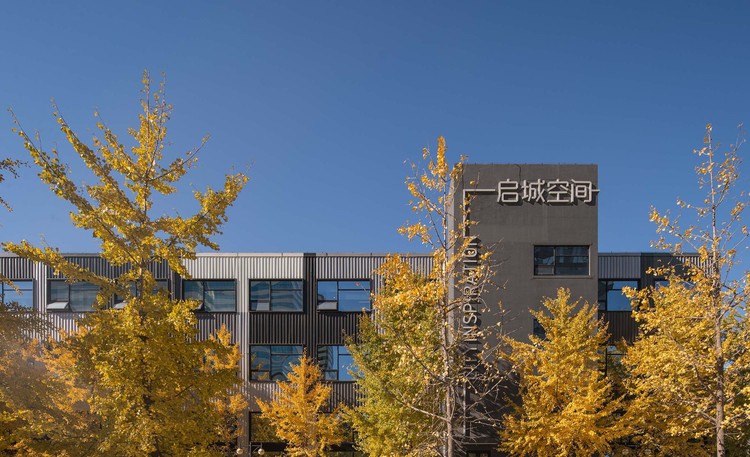Fine Arts Museum of Asturias Francisco Mangado
2015-05-10 21:00
© Pedro Pegenaute
佩德罗·佩佩诺特


架构师提供的文本描述。该项目涉及整个建筑群,包括韦拉尔德宫和卡萨奥维多门户的未来。只有通过这样一种全面的办法,才能保证像阿斯图里亚斯美术馆这样重要的机构的最佳运作。
Text description provided by the architects. The project addresses the whole complex, including the future of the Velarde Palace and the Casa Oviedo-Portal. Only through such a comprehensive approach can the optimal functioning of an institution as important as the Fine Arts Museum of Asturias be guaranteed.
© Pedro Pegenaute
佩德罗·佩佩诺特


以这一想法为出发点,该项目考虑在城市建筑群内建造一座全新的建筑。也就是说,周围现有的立面顺序被视为一种背景条件,而这些立面扮演着城市“背景”的角色,这是毫无疑问的,在这种背景下,建造一座有自己的立面的新建筑;通过赤裸裸的、完全没有框架的开口,可以看到一个展示自己的立面。从外观上看,它将有可能完成一座巨大的发光建筑,它的玻璃和反射将向外投射并叠加在城市历史上,给新的阿斯图里亚斯美术博物馆带来了一个大胆而复杂的形象。
With this idea as starting point, the project contemplates raising an altogether new building within the urban complex. That is, the sequence of existing facades around is taken as a contextual condition, and these facades take on the role of an urban ‘backdrop’, unquestioned, against which to erect a new building with a facade of its own; a facade that reveals itself, is discerned, through naked, totally frameless openings. In the exterior it will be possible to complete a large luminous construction, glazed and full of reflections, that will project outward and superpose itself on urban history, giving the new Fine Arts Museum of Asturias a bold but complex image.
Floor Plan


解释建筑物与环境关系的另一个基本要素是内部街区庭院。通过明亮的玻璃台面,庭院变成了一个相遇的地方,也是连接博物馆建筑群中各种建筑的一个元素。
The other fundamental element for explaining the building’s relationships with the context is the inner block courtyard. Through luminous glazed catwalks, the courtyard becomes a place for encounters and an element connecting the various buildings of the museum complex.
© Pedro Pegenaute
佩德罗·佩佩诺特


看一看新的平面图,就可以看出庭院、空隙在塑造整个建筑群中的重要性。街区庭院-经过充分改造并纳入建筑群的组织-以及新主建筑的有盖庭院-这两座建筑都是由Velarde宫和Casa Oviedo组成的建筑,在概念上和物理上都扩大了目前由Velarde宫和Casa Oviedo组成的房地,成为连接和构造出入点和流通要素的巨大天窗,成为整个建筑群的参考空间。
A look at the new floor plan throws light on the importance of the courtyards, the voids, in shaping the entire complex. Both the block courtyard – adequately upgraded and incorporated into the organization of the complex – and the covered court of the new main edifice, which acts as a great skylight articulating and structuring access points and circulation elements, becoming a reference space for the entire complex, are key parts of a proposal that conceptually and physically expands the current premises made up of the Velarde Palace and the Casa Oviedo-Portal.


光在建筑中总是很重要的,但在博物馆里就更重要了。当然,我们指的不是人工照明,它本身就构成了一个项目,而是指自然光。理想情况下,自然光的存在是非常微妙的。该项目试图通过空隙的逻辑,无论是街区庭院还是中央核心,通过天窗的逻辑来实现这一理想,这直接影响到更高的楼层。
Light is always important in architecture, but more so in a museum. Naturally we’re not referring to the artificial lighting, which of course constitutes a project in itself, but to natural light. Ideally, the presence of natural light is exquisitely subtle. And the project has tried to work toward this ideal through the logic of the voids, whether the block courtyards or the central core, and through the logic of the skylights, which directly affect the higher floors.
© Pedro Pegenaute
佩德罗·佩佩诺特


新建筑有两个独特的元素。一个是历史建筑后面的新立面,它正朝着Calle de la Rúa和它与广场Alfonso II的拐角处跑去。不仅仅是一个正面,这是一个很好的形式,视觉和功能强度的元素。一方面,这将是博物馆的新形象,这一形象总是受到历史现实的磨练。它还塑造了公共楼梯,让人们可以进入博物馆的所有层次,以及双层和三层高的入口空间;与历史正面对话的空间,就像它们在内部会聚和分离的方式。该项目集中了这两个时期在这个厚厚的正面,并允许一个斜视的现有城市,从内部,通过这些正面。
There are two unique elements in the new construction. One is the new facade behind the historic one running toward Calle de la Rúa and its corner with Plaza Alfonso II. More than just a facade, this is an element of great formal, visual, and functional intensity. On one hand it will be the museum’s new image, an image always tempered by historical realities. It also shapes the public stairway, which gives access to all the museum levels, and the double- and triple-height entrance spaces; spaces that engage in dialogue with the historical facades in the way they converge with and diverge from them in the interior. The project concentrates the two periods in this thick facade and allows an oblique view of the existing city, from inside, through these facades.
© Pedro Pegenaute
佩德罗·佩佩诺特


最后,在现有立面的表面上,新的立面带有精致的玻璃饰面,产生了内部的交叉反射;两个立面之间的相互作用,创造了一个强度丰富的空间。
And finally, with the surface of the existing facade ,the new facade with an elaborate glass finish produces a play of crossed reflections inside; an interaction between two facades that creates a space of rich intensity.
© Pedro Pegenaute
佩德罗·佩佩诺特


屋顶上的天窗在形式上也是独一无二的,它从正面的线条向后退,对外部影响很小,但给内部带来了很大的质量。
Also unique in form are the skylights on the roof, which, being set back from the line of the facade, has little impact on the exterior, but gives great quality to the interior.
© Pedro Pegenaute
佩德罗·佩佩诺特
















































Architects Francisco Mangado
Location Calle Santa ANA, 1, 33003 Oviedo, Asturias, Spain
Category Museum
Work Direction Francisco Mangado
Area 11142.0 m2
Project Year 2014
Photographs Pedro Pegenaute
Manufacturers Loading...
























